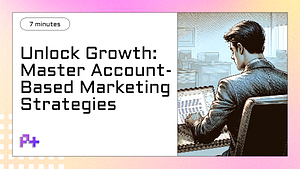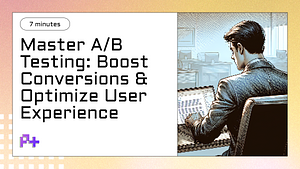1. The Importance of Infographics in Social Media Marketing
In the fast-paced world of social media marketing, capturing attention is more crucial than ever. Infographics serve as powerful visual tools that convey complex information quickly and clearly, making them essential in this context. With the average user scrolling through their feeds at lightning speed, social media infographics stand out by combining eye-catching graphics with concise, informative content. This duality not only attracts attention but also enhances the likelihood of shares and likes, increasing overall engagement. By presenting data and insights in a visually appealing format, brands can effectively communicate their messages and drive user interaction.
Moreover, the importance of infographics in social media marketing extends beyond mere aesthetics. They are instrumental in simplifying complex data and making it accessible to a broader audience. For example, a well-designed infographic can transform lengthy statistics or intricate concepts into digestible visual narratives that resonate with users. This simplification is particularly beneficial in industries where data plays a significant role, such as finance, health, and technology. By employing social media infographics, marketers can ensure their content is not only informative but also memorable, fostering a deeper connection with their audience.
Finally, using infographics in social media marketing can significantly enhance brand visibility and authority. Infographics are highly shareable, making them perfect for viral marketing campaigns. When users find an infographic that adds value to their understanding, they are more likely to share it with their networks, thereby amplifying the brand's reach. Additionally, infographics can establish a brand's credibility by showcasing expertise in a particular field. By consistently sharing high-quality, informative social media infographics, brands can position themselves as thought leaders, ultimately driving traffic to their websites and increasing conversions. In summary, the strategic use of infographics in social media marketing is not just about aesthetics; it is a multifaceted approach that promotes engagement, simplifies communication, and enhances brand authority.
2. Tips for Creating Effective Infographics
Creating effective social media infographics requires a blend of creativity, clarity, and strategic planning. First and foremost, it’s crucial to define the purpose of your infographic. Are you aiming to educate your audience, promote a product, or share statistics? Understanding your objective will guide the design and content. Start by selecting a compelling topic that resonates with your target audience. Use relevant data and insights that not only inform but also engage viewers. High-quality visuals combined with concise, impactful text will enhance the overall effectiveness of your infographic.
Next, consider the layout and design elements of your social media infographics. A clean, organized structure helps convey your message clearly. Use a hierarchy of information by placing the most important points at the top and supporting details below. Color schemes should align with your brand identity while also ensuring readability. Incorporating visual elements like icons, graphs, and images can effectively illustrate your points and make complex information more digestible. Remember to maintain a balance between visuals and text; overcrowding your infographic can overwhelm viewers and detract from the main message.
Lastly, don't underestimate the power of optimization for social media. To maximize the reach and engagement of your infographics, ensure they are tailored for each platform. This includes using the appropriate dimensions, file sizes, and formats. Adding alt text and relevant hashtags can significantly enhance discoverability. Additionally, consider including a call-to-action that encourages users to share, comment, or learn more. By following these tips and focusing on quality and clarity, you can create social media infographics that not only capture attention but also deliver valuable information to your audience.
3. Best Practices for Promoting Your Infographics
Promoting your infographics effectively on social media is crucial for maximizing their reach and engagement. First and foremost, it's essential to identify the right platforms where your target audience is most active. For instance, visually-driven platforms like Instagram and Pinterest are particularly effective for sharing infographics, as they cater to users who appreciate visual content. Tailor your promotional strategy by creating platform-specific graphics, such as Instagram Stories or Pinterest pins, to highlight the key points of your infographic. By doing so, you can capture attention quickly and drive traffic to your main content.
Another best practice for promoting your social media infographics involves leveraging the power of strategic hashtags and keywords. Research and incorporate relevant hashtags that are trending within your niche, as this can significantly increase your visibility among users searching for specific topics. Additionally, crafting an engaging caption that encapsulates the essence of your infographic can entice viewers to click through and explore further. Don’t forget to encourage your audience to share your infographic by including a call-to-action in your posts. This not only boosts engagement but also expands your reach as followers share your content with their networks.
Lastly, consider collaborating with influencers or industry experts who can help amplify your infographic's reach. Influencers often have established followings that trust their recommendations, making them valuable partners in promoting your content. You can create a mutually beneficial arrangement where you provide them with your infographic to share with their audience, while they help you gain exposure. Additionally, participating in relevant online communities, such as Facebook groups or Reddit threads, can provide opportunities to share your infographics with an interested audience. By implementing these best practices, you can ensure your social media infographics are not only seen but also appreciated and shared widely.
4. Customizing Content for Different Social Media Platforms
Customizing content for different social media platforms is crucial for maximizing engagement and ensuring your message resonates with various audience segments. Each platform has its unique characteristics, user demographics, and content formats that dictate how information is best presented. For instance, Instagram thrives on visually striking images and short, impactful captions, making it the ideal platform for infographics that are vibrant and easy to digest. In contrast, LinkedIn users prefer more in-depth, professional content, which means your infographics should include detailed statistics and insights that appeal to a business-oriented audience. By tailoring your social media infographics to fit the nuances of each platform, you enhance the likelihood of shares, likes, and overall interaction.
Furthermore, understanding the optimal dimensions and formats for each social media platform is essential for ensuring your infographics are visually appealing and functional. For example, Facebook allows for longer images and a variety of formats, giving you the flexibility to create comprehensive infographics. However, Twitter has strict character limits and favors concise visuals, so your infographics should focus on the most critical data points, possibly accompanied by a succinct tweet that invites discussion. By customizing the size, design, and information density of your infographics, you create content that not only captures attention but also maintains clarity and effectiveness across different social media channels.
Lastly, consider the timing and frequency of your posts to further customize your content strategy. Different platforms have varying peak times for audience engagement; for instance, Instagram users often engage more during evenings and weekends, while LinkedIn sees higher activity during weekday working hours. By scheduling your social media infographics to post at these strategic times, you can significantly increase visibility and interaction rates. Additionally, experimenting with different styles—such as carousel infographics for Instagram or threaded visuals for Twitter—can provide insight into what resonates best with your audience. Ultimately, customizing your infographics for each social media platform not only enhances user experience but also drives better results for your content marketing efforts.
5. Conclusion: Maximizing Engagement Through Infographics
In conclusion, leveraging social media infographics is a powerful strategy to maximize engagement across various platforms. Infographics condense complex information into visually appealing formats, making them more digestible and shareable for users. By presenting data in a clear and attractive way, brands can capture their audience's attention quickly, encouraging them to interact with the content. As visual content is processed faster by the brain compared to text, infographics can significantly enhance user understanding and retention, leading to increased shares and comments.
To further maximize engagement, it’s crucial to tailor your social media infographics to fit the specific platform you are using. Different social media channels have unique user demographics and content preferences. For instance, Instagram's visual-centric audience thrives on vibrant and creative infographics, while LinkedIn users may appreciate more data-driven and professional designs. By customizing your infographics to align with the expectations and behaviors of users on each platform, you can drive higher levels of interaction and foster a stronger connection with your audience.
Finally, measuring the effectiveness of your social media infographics is essential for continuous improvement. Utilize analytics tools to track engagement metrics such as shares, likes, and comments. This data will provide insights into what types of infographics resonate most with your audience, allowing you to refine your strategy over time. By consistently creating relevant and engaging infographics, you can establish your brand as a thought leader in your industry, driving both engagement and conversions through the power of visual storytelling.



